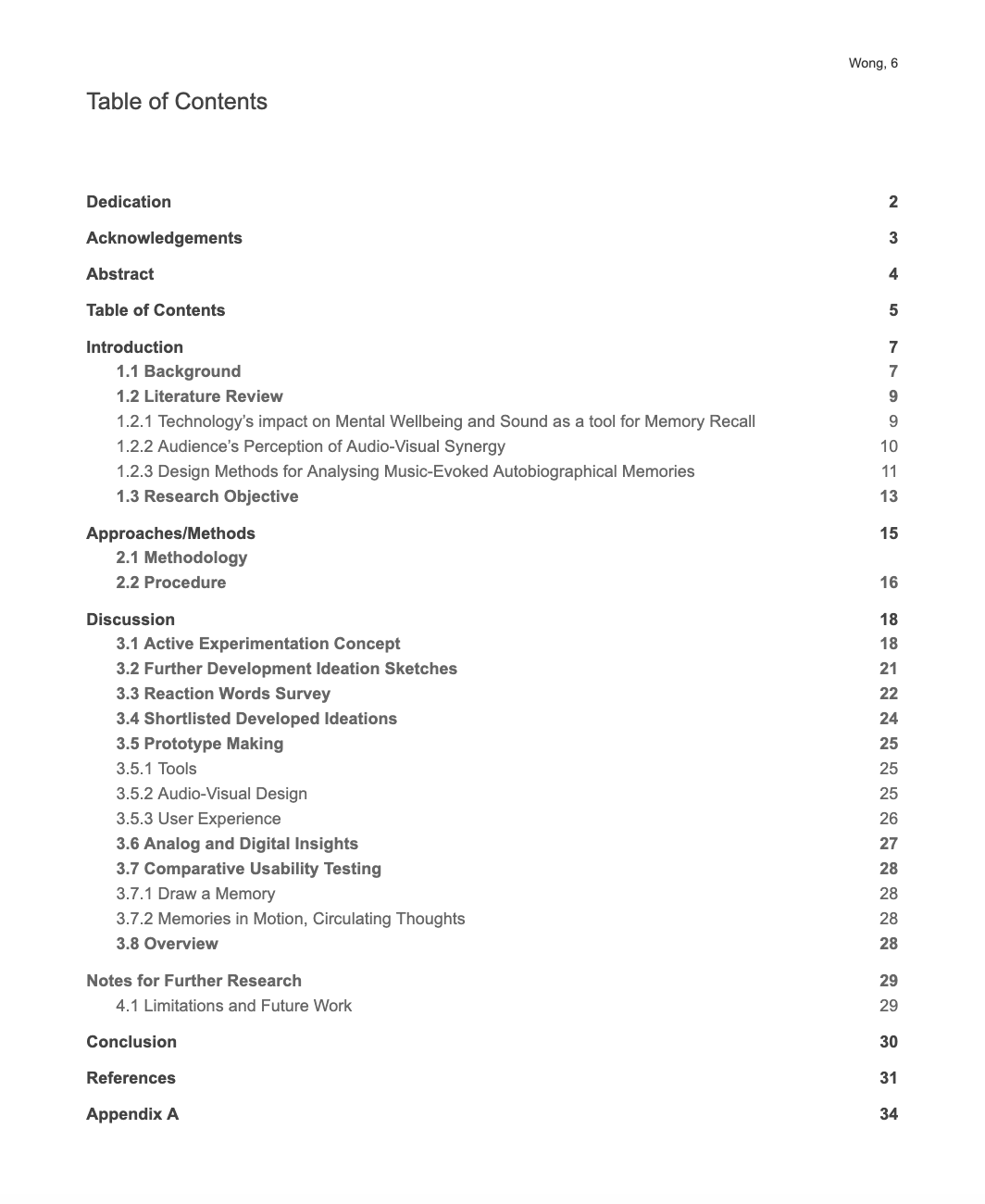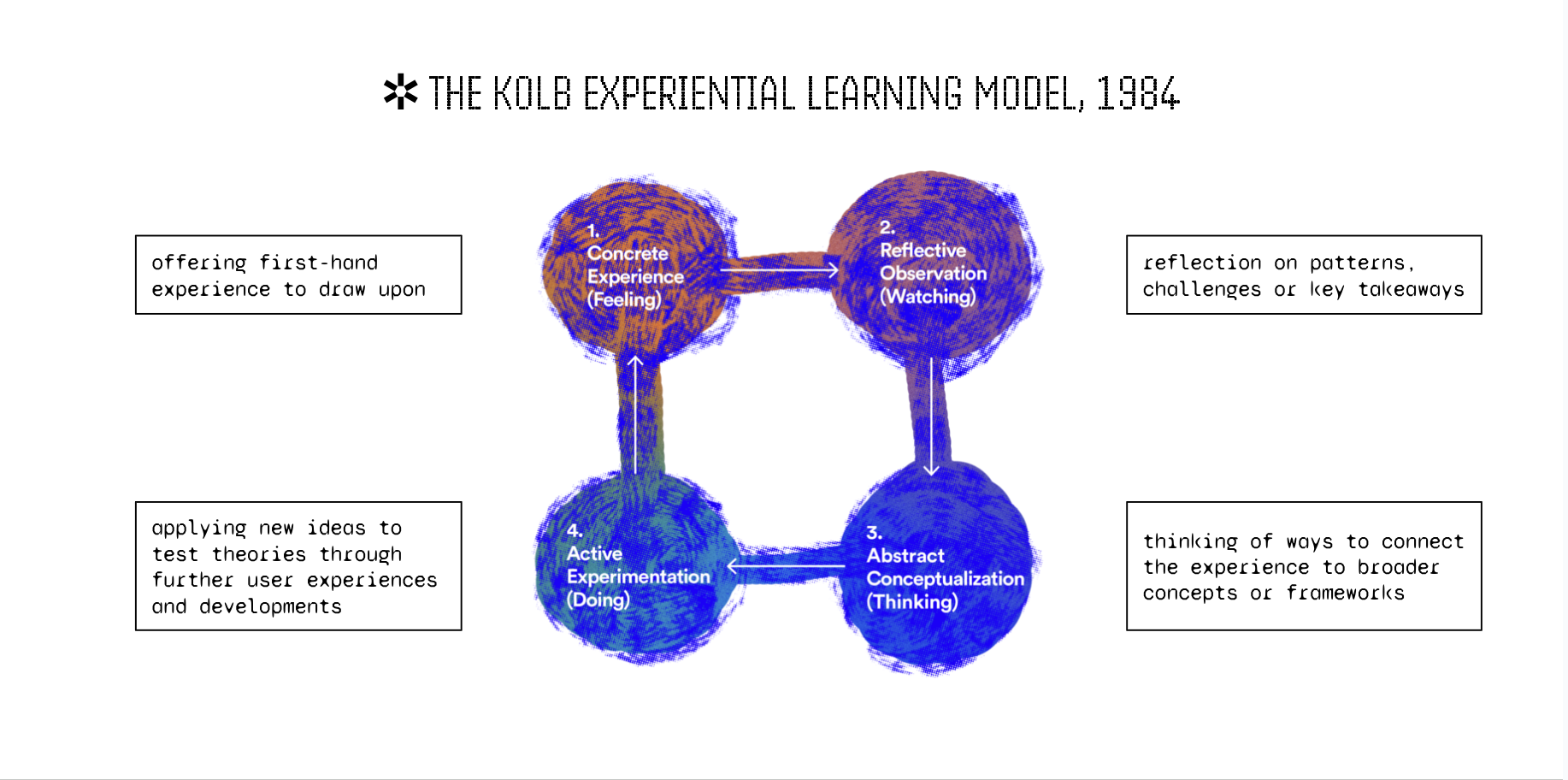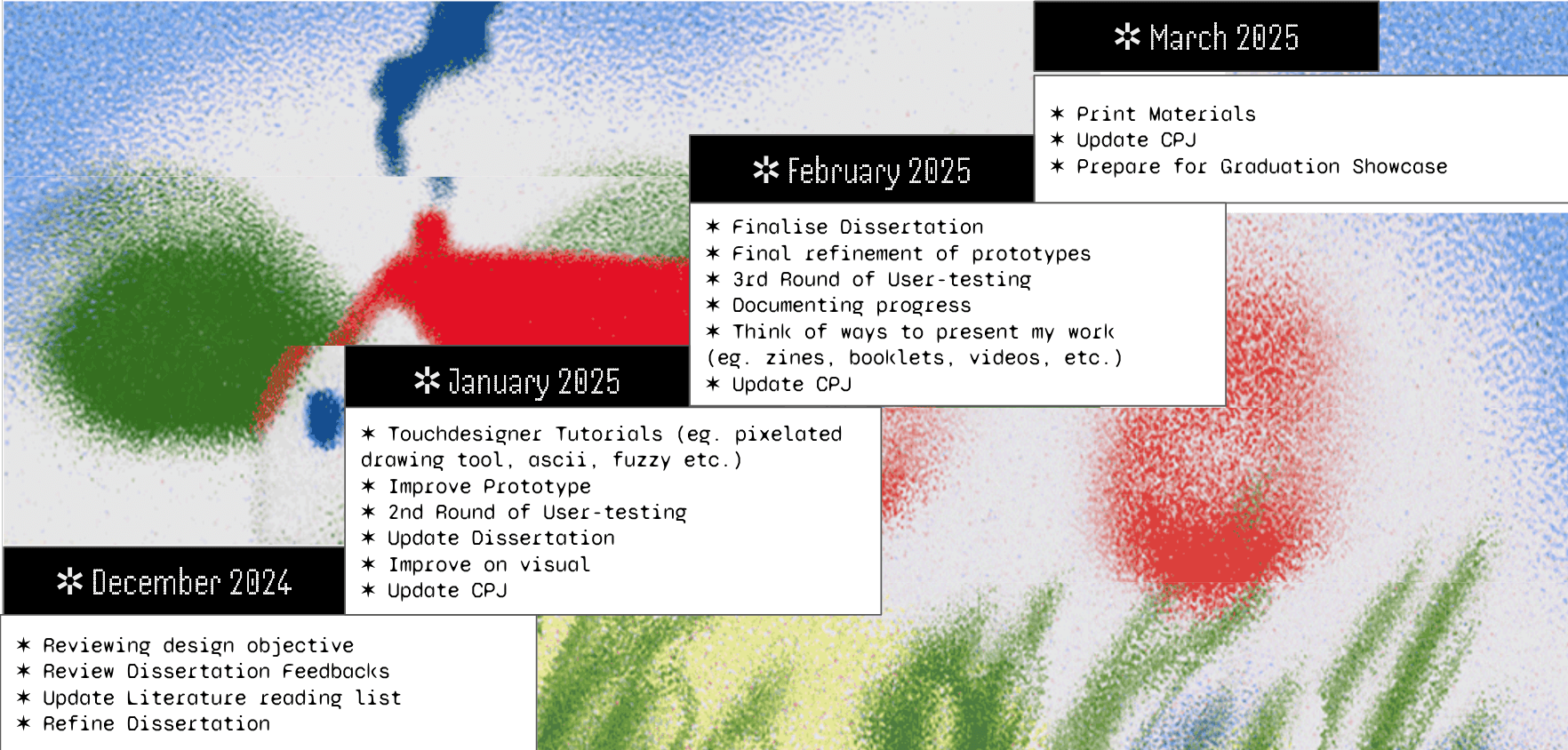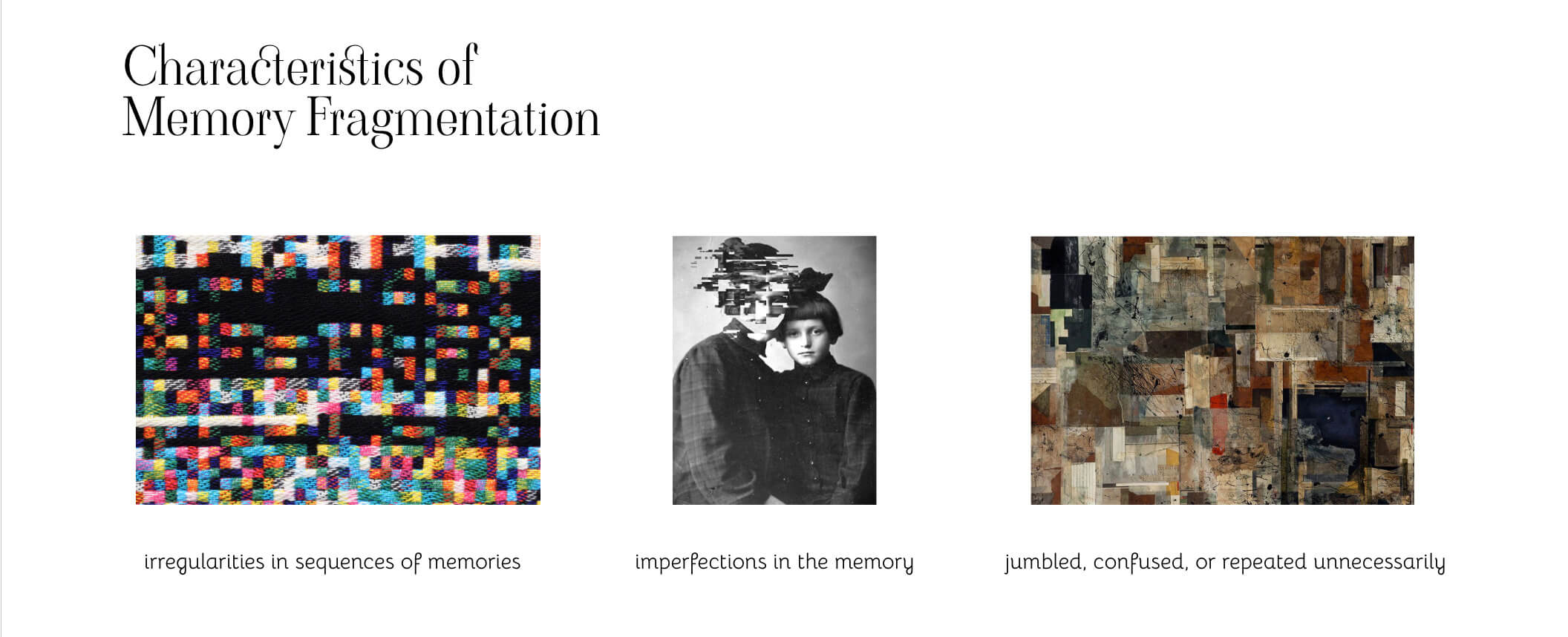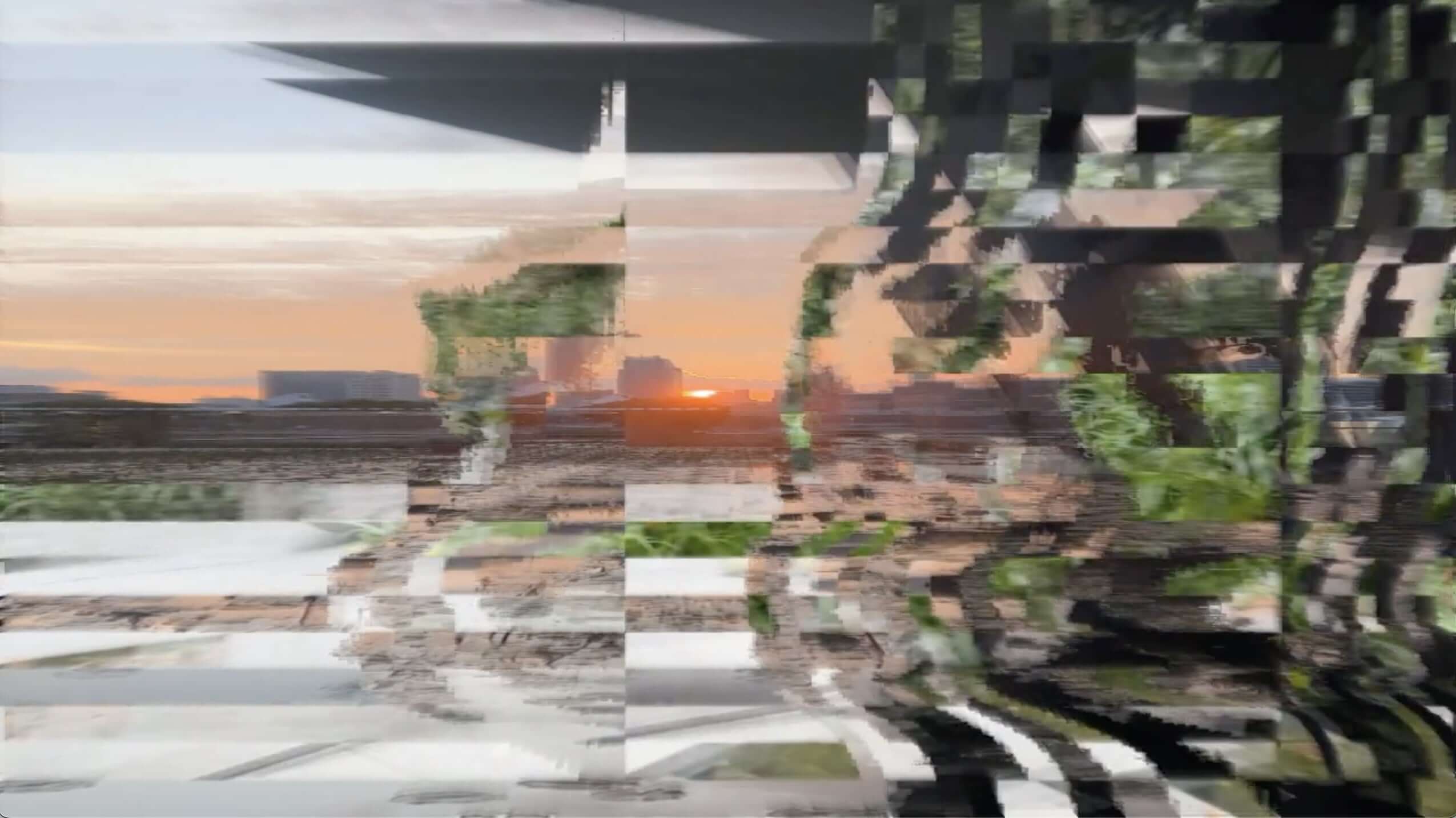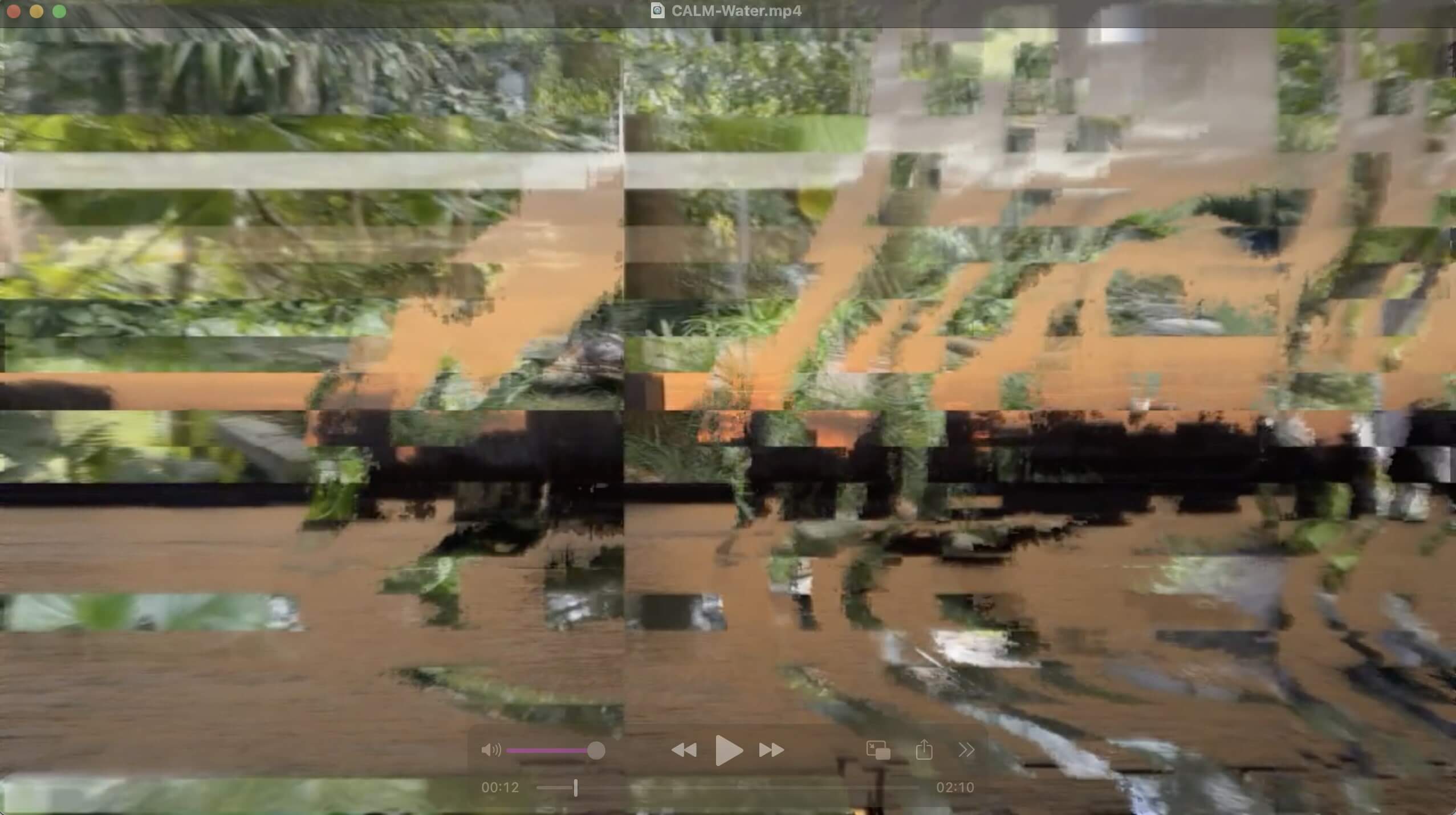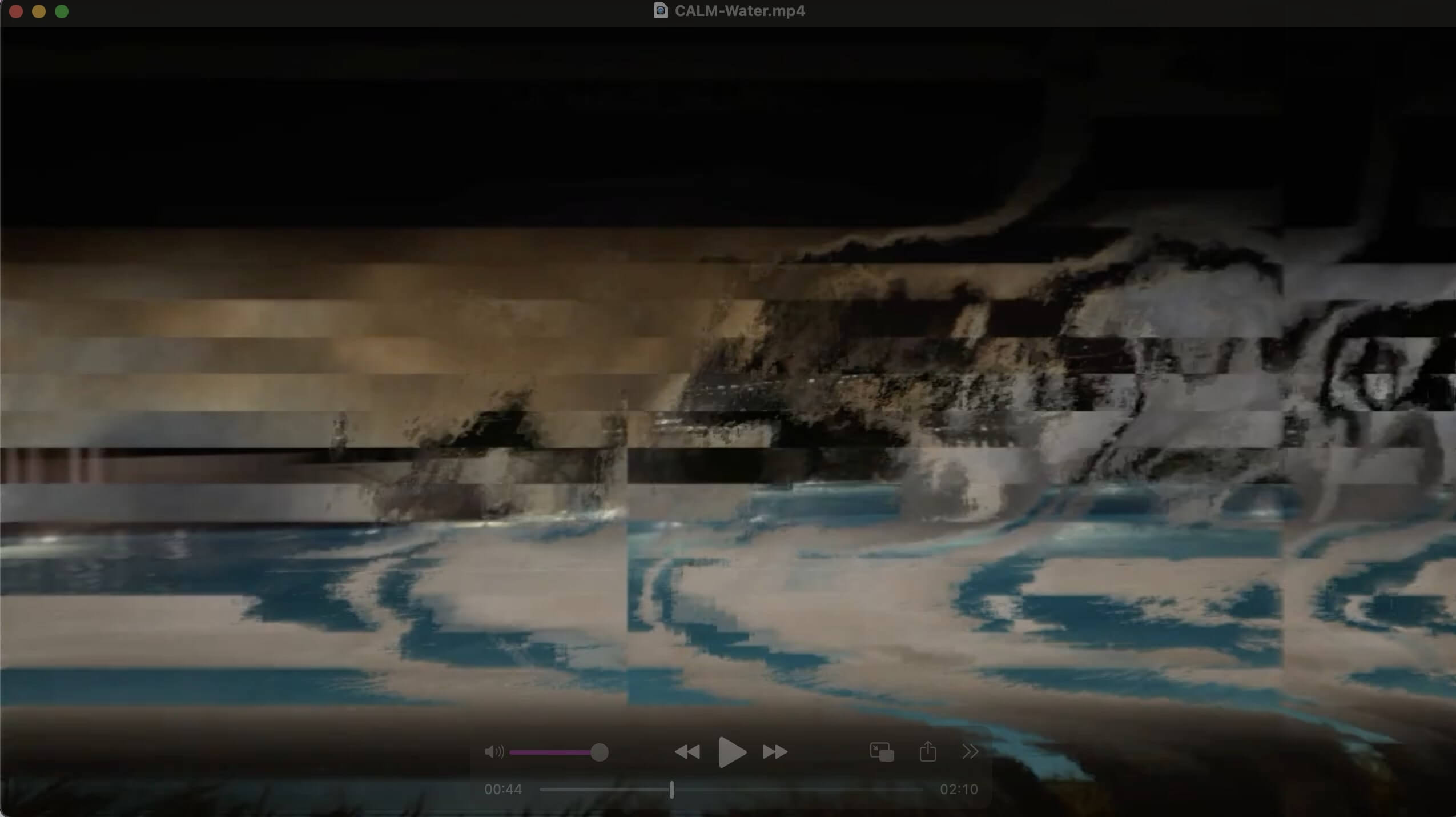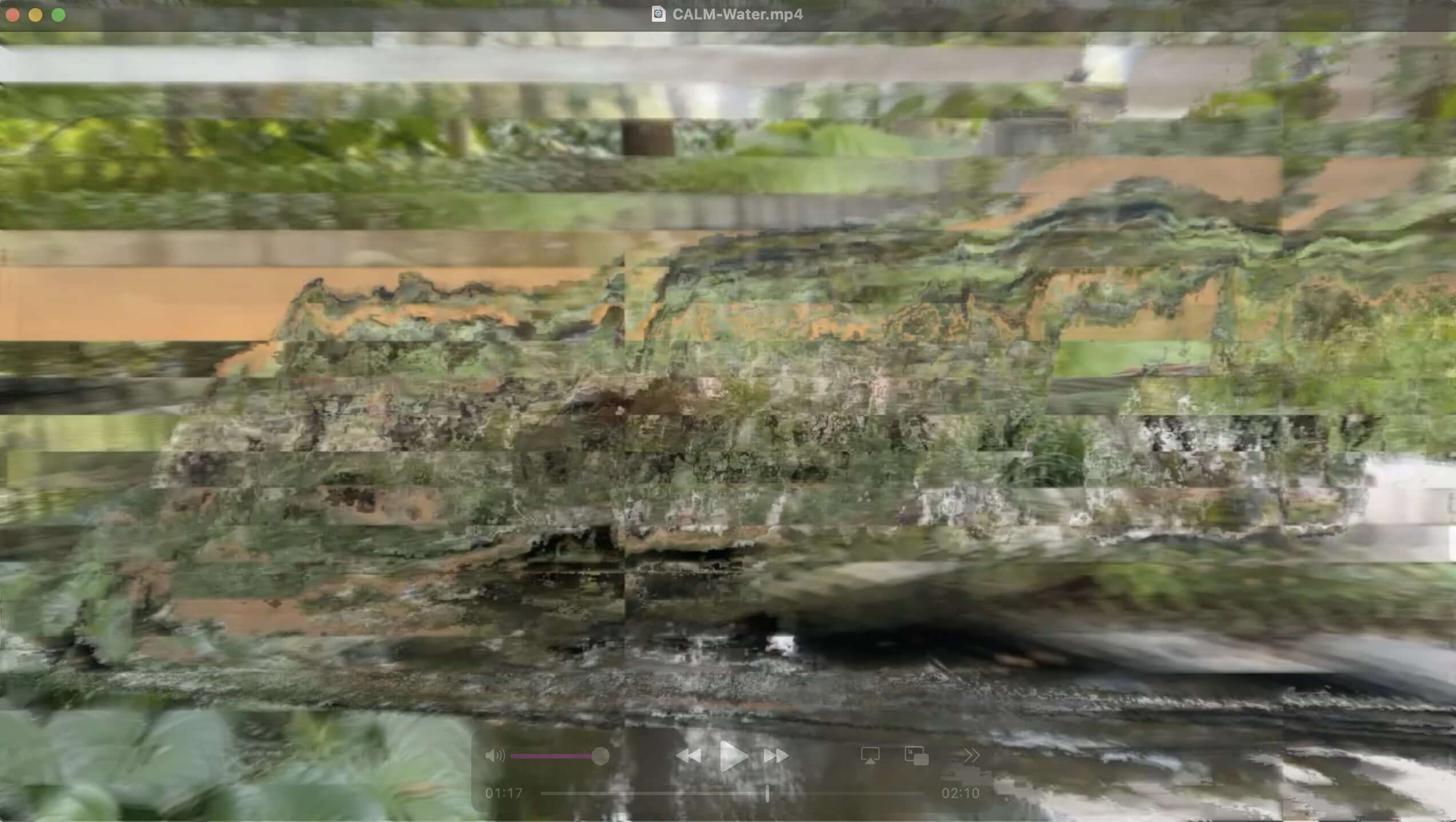ོ࿐˖✶⊹₊𖦹 W.1 BACK FROM SEMESTER BREAK! 𖦹₊⊹✶ ࣪˖࿐ོ
SEMESTER BREAK
Schedule and Plannings
I had planned out a schedule during the semester break to ensure that I’m on track when I return to this semester. Looking at the submissions timeline, the dissertation will be due during the first half of the semester, while I have a little more time to prepare for my graduation project.
In order to finish my dissertation, my prototype has to be complete first before I can start writing and documenting my findings. After some future projection, I found that I didn’t need to have a fully complete prototype before completing the dissertation. I have ample time after Week 7 to deal with the bells and whistles before the presentation on Week 16.
Previously, I have kept the number of experiments open, so I have the flexibility of constant updates to my prototype by conducting experiments until it yields negligible results. However, that is no longer a realistic option. My new plan going forward is just to conduct 2 more user-test sessions, putting in more effort to the preparation phase in order to gather as much resources for iteration as I can.
I didn’t project a possibility of conducting any experiment sessions during the break due to how busy it gets during that time of the year and I took a little break to get my mind off the project so I would not burn myself out and will come back from the break feeling fresher with new ideas. So my extra time went towards keeping my dissertation up to date with my progress, documenting my preparation phase and brainstorming after some of the comments I got from Andreas in my Summative Feedback. Having read the dissertation again, I do agree that my literature review was a little too long-winded, and removed most of the unnecessary writing, also moved some stuff around to make the flow smoother.
Going into the final semester, I feel rather confident in myself having resolved some pretty complex issues I had in the first half of the year. Having took a hiatus on my final project work, I have a little more time and headspace to think about how to progress with the challenges that had came my way. My biggest concern now is how I’m going to be presenting my graduation project visually, as currently the deliverable are all digital and I'm not very happy with the progress thus far.. but I’m also sure that the solution to that will unfold itself going into the next few weeks.
Project Update Sharing
This week, we prepared a presentation deck as a refresher on our topic, where we talked about our objective, readings, experiments done in semester 1, challenges, and plans moving forward. I am quite worried even though it is just the beginning of the project, but that is precisely why, as the direction still seems uncertain. Perhaps it is the word ‘synaesthesia’ that got me feeling this way because of how specific this concept is and how hard it is to get around this concept. Despite all this, I am still determined I will find a clearer direction by branching out and shifting my focus on other closely related areas (eg. digital dementia)
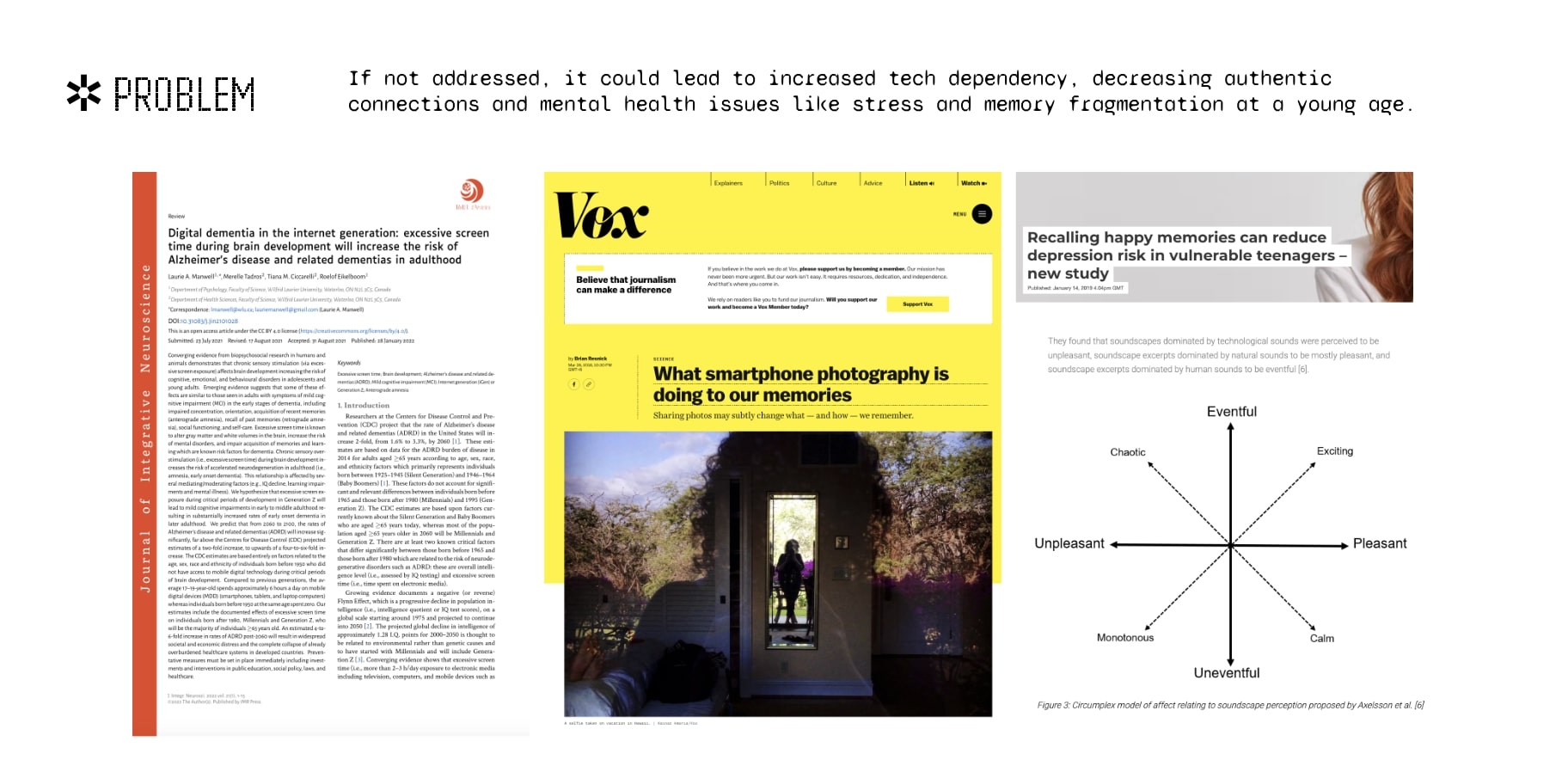
side effects of relying too much on digital photography (technology) to remember 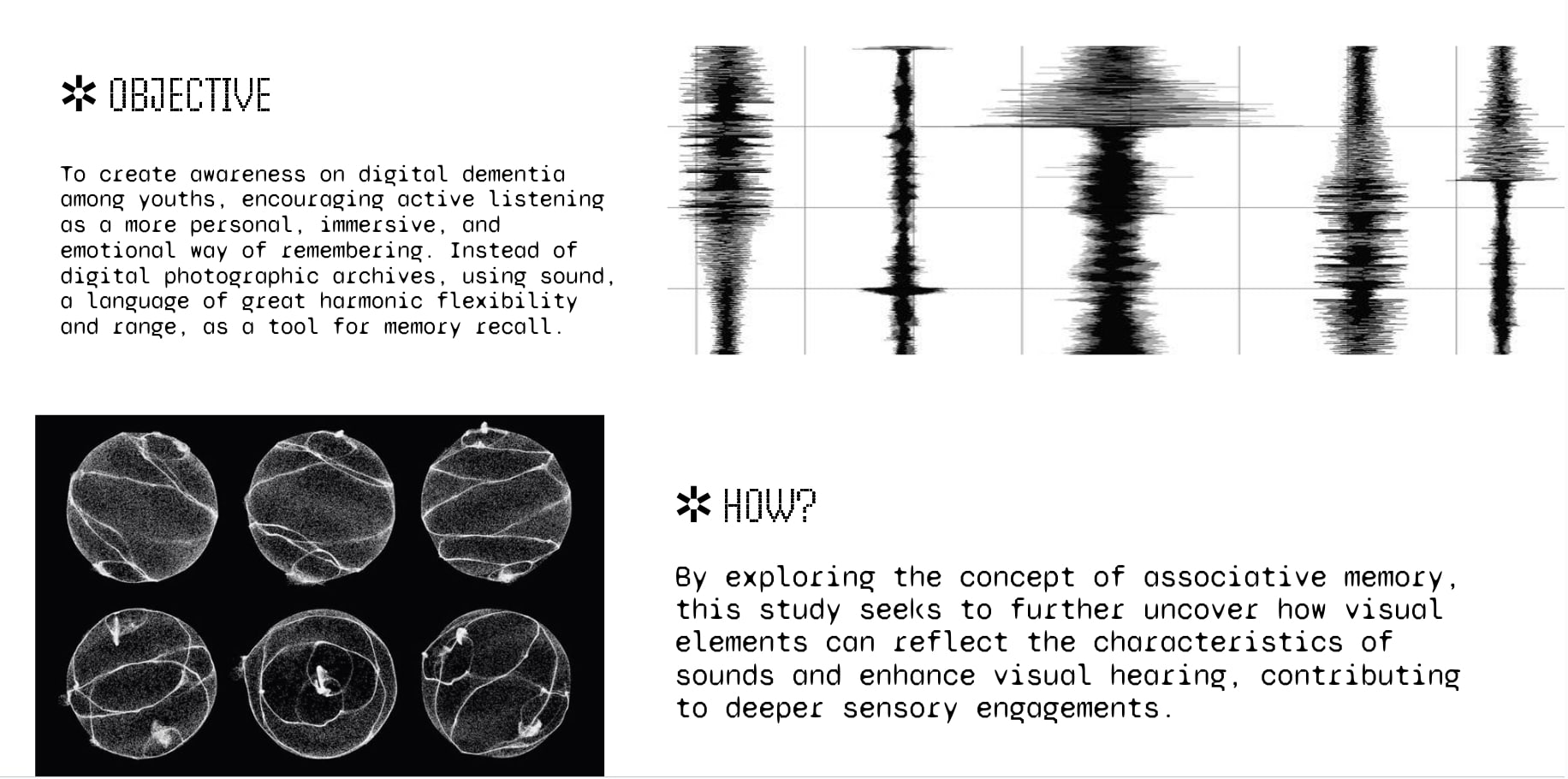
topic is revolving around digital dementia now (later on as I progress, I diverged it) 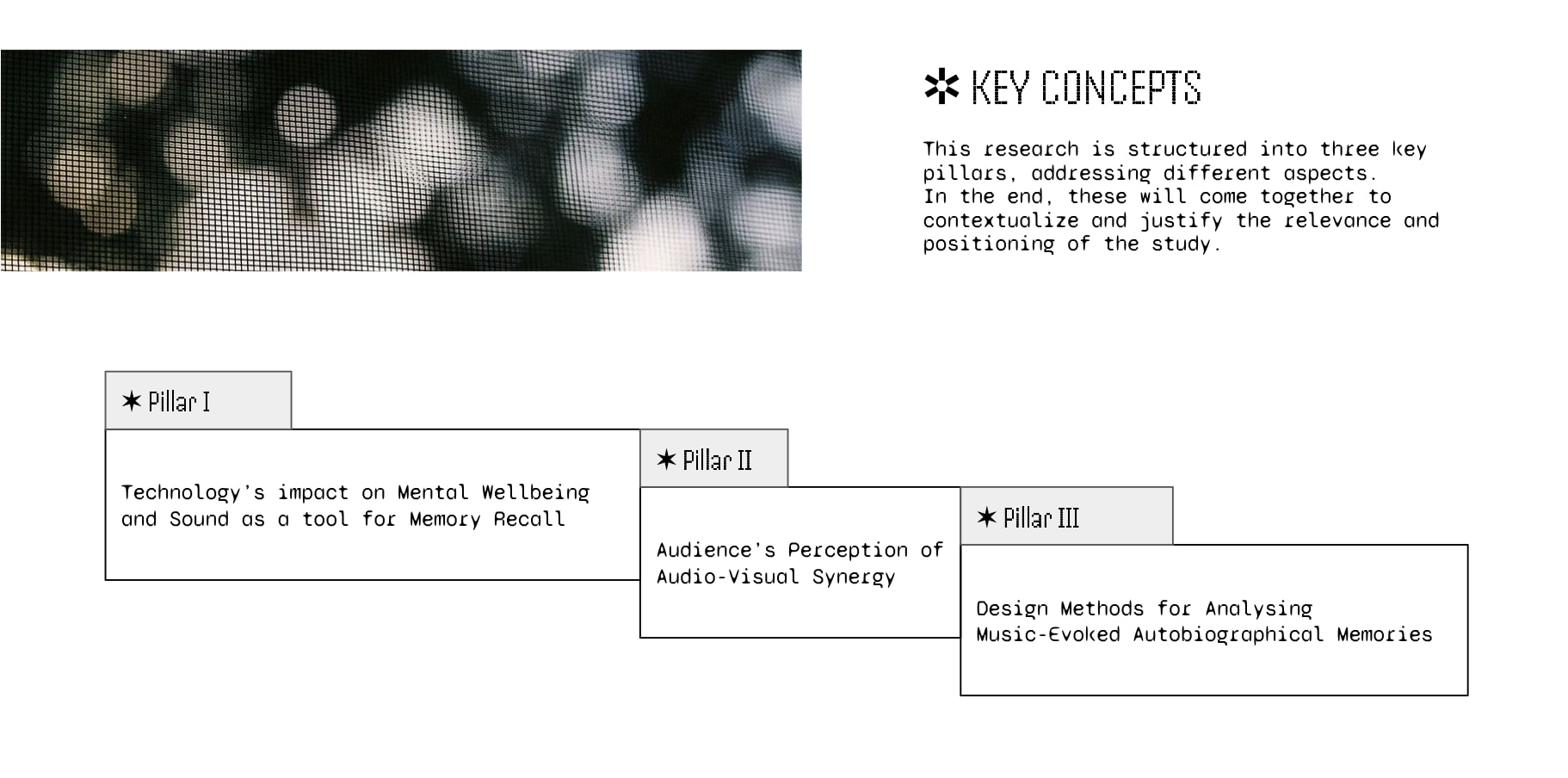
sound's impact, synergy, and designing for autobiographical memories (dissertation)
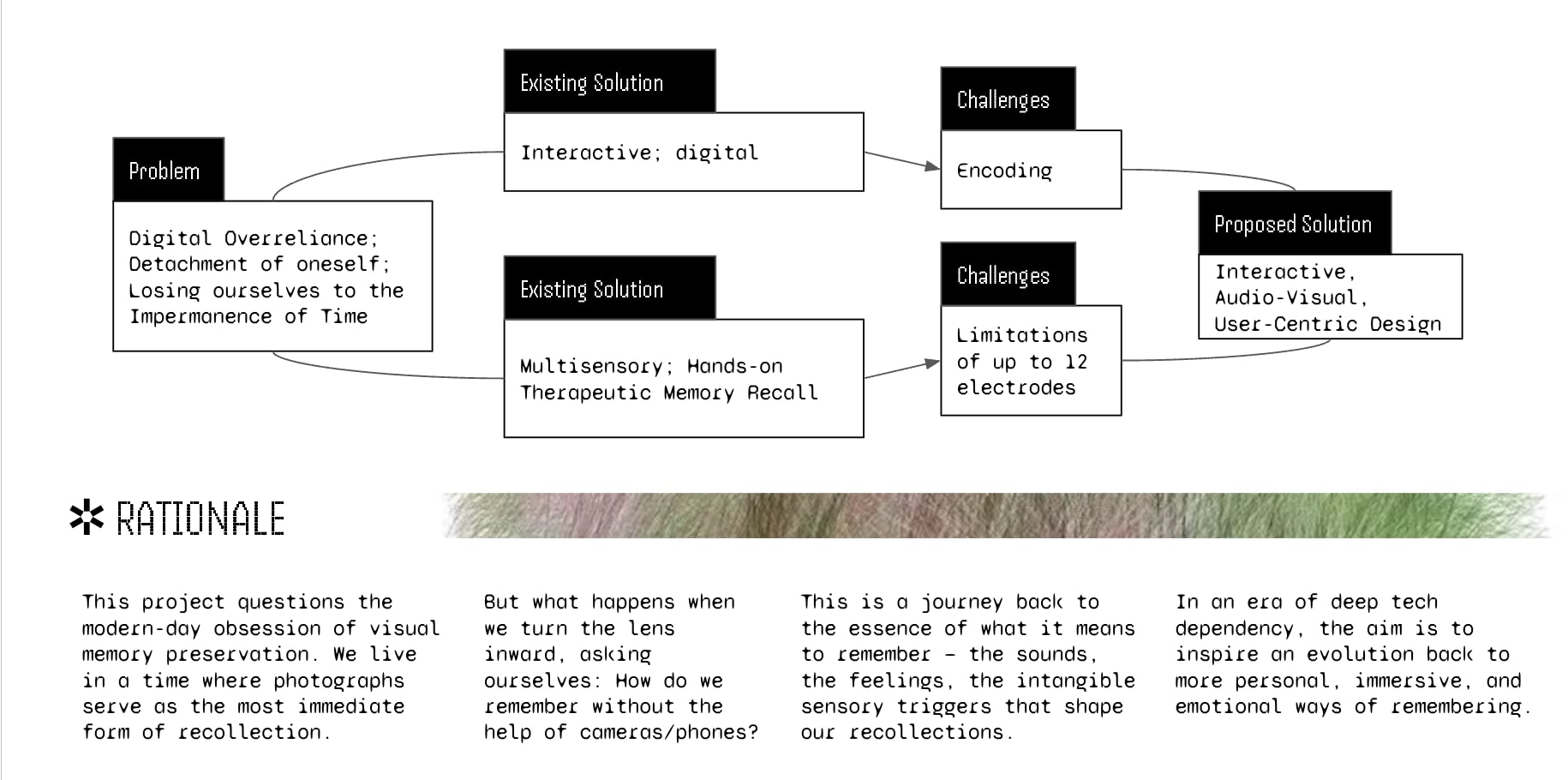
it's a topic that is thought-provoking and seeks to provide awareness and a new perspective towards how we remember and recall memories by delving into sonic triggers, offering new ways to relive the past 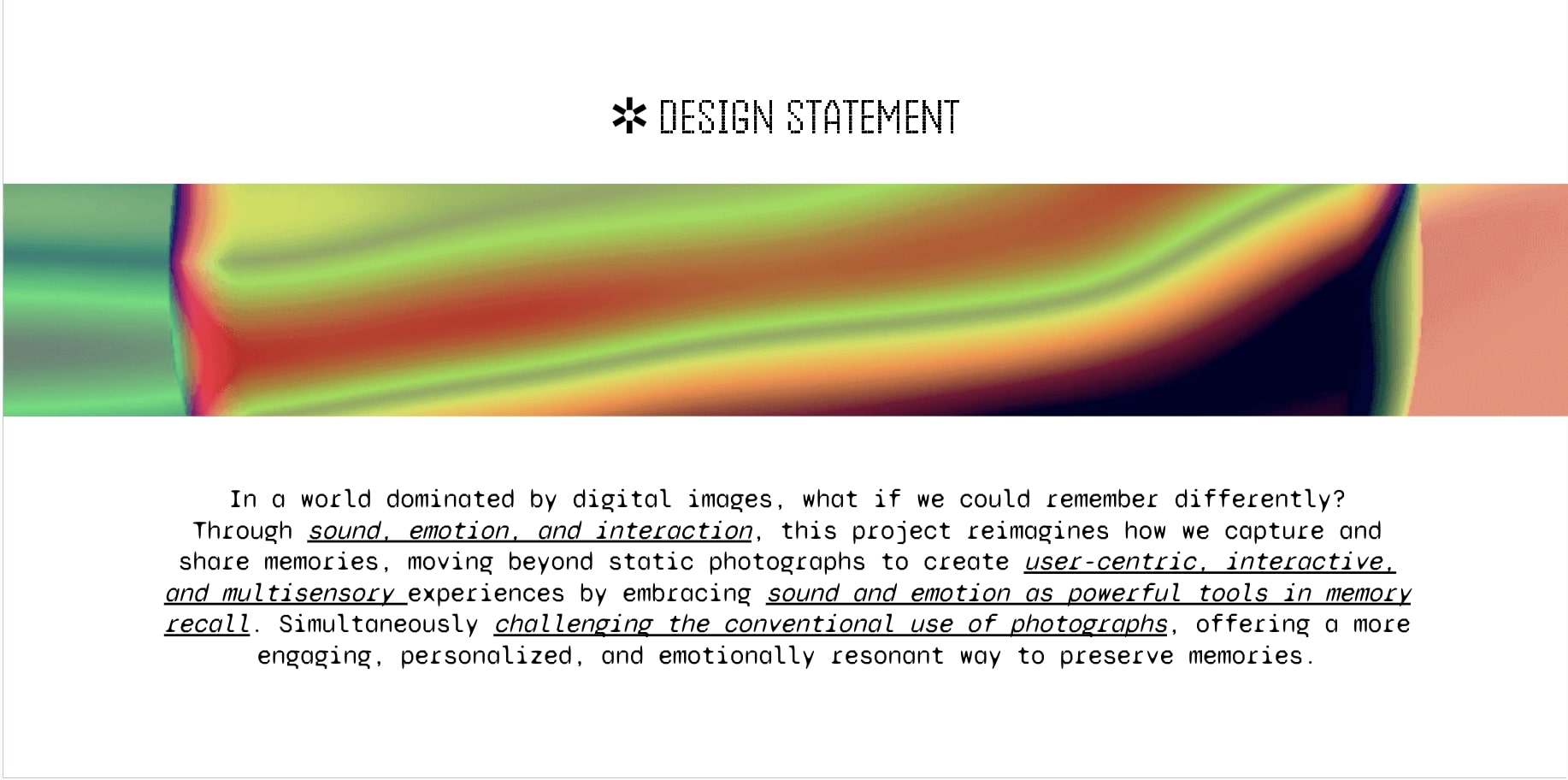
this will be done through multisensory audio-visual experiences, soundscapes, and interactive prototypes (recalling through sound to encourage the digital generation to be more present in the moment)
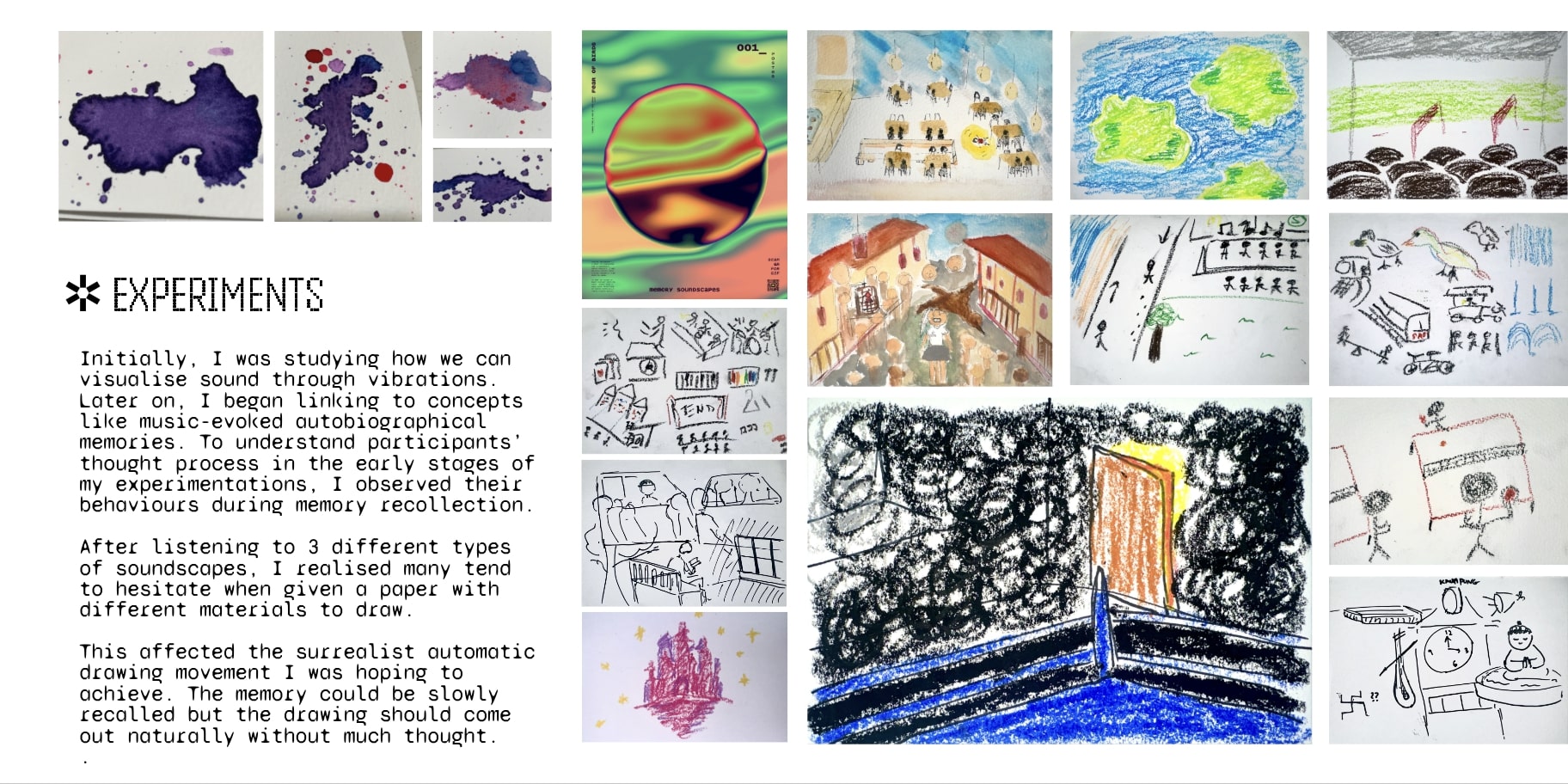
recap of physical soundscape recall experiments done in semester 1 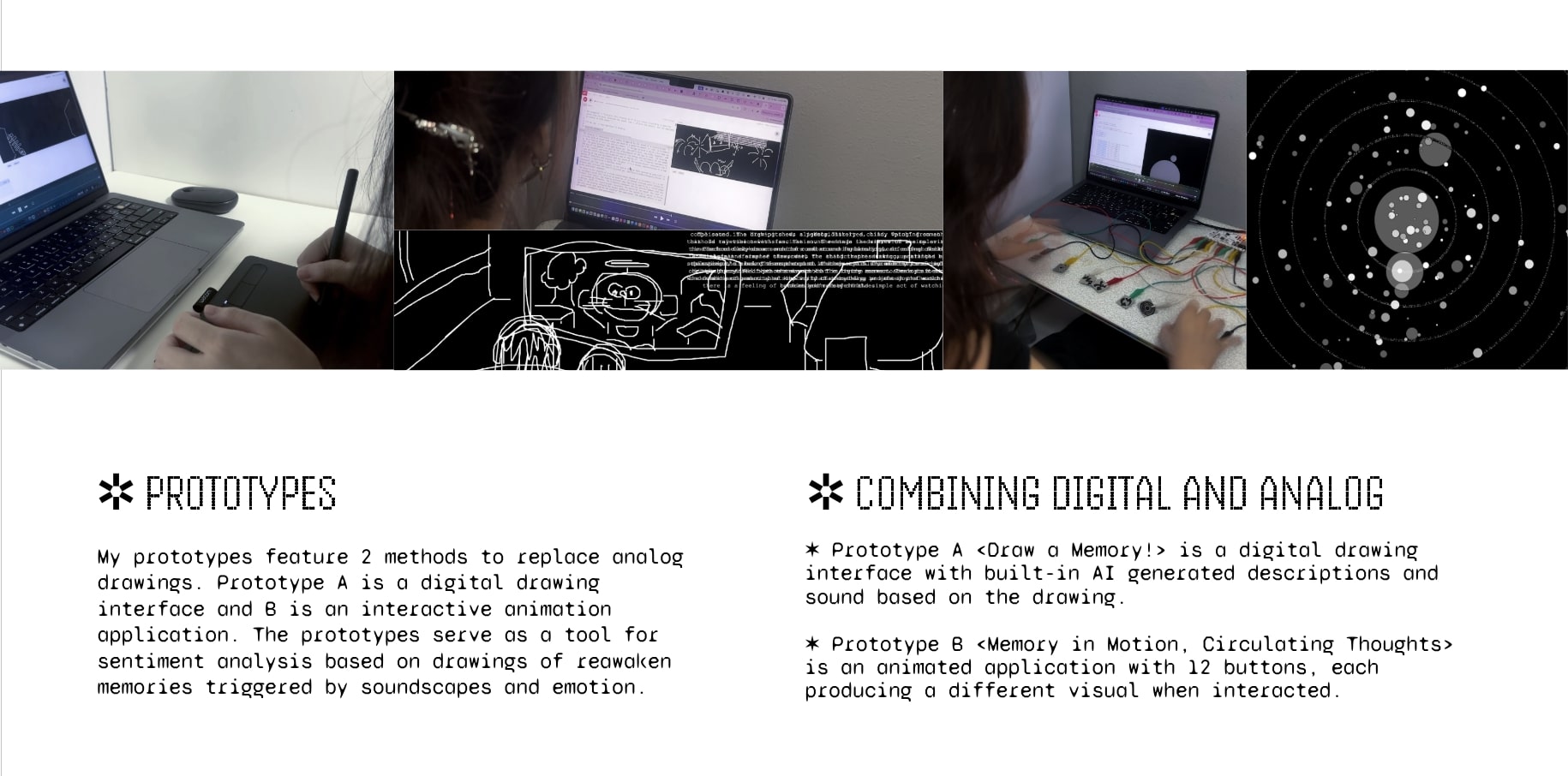
recap of digital interactive audio-visual prototypes done in semester 1
Categorising Soundscapes
As my project has been quite digital with very little visuals, I am thinking of replicating how fragmented memories look like in our head — whether its broken, blurry or incomplete. Therefore, I searched up the types of soundscapes that I can use to create visuals that represent each one of them.
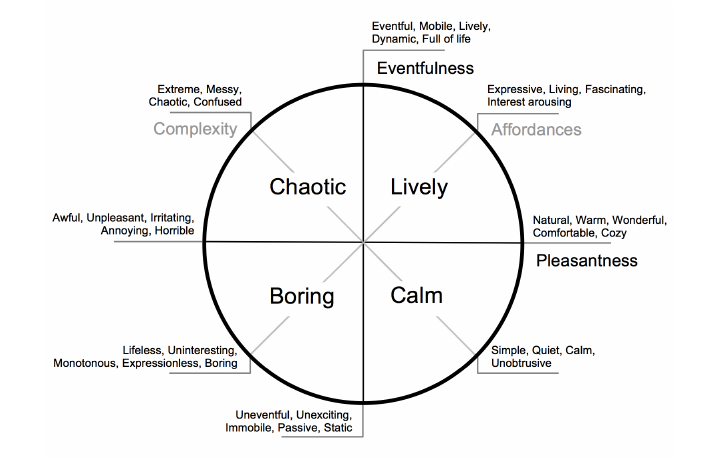
Memory Fragmentation Visuals
Using touchdesigner to create visuals that represent the soundscapes I have categorised. I am still in the process of creating these visuals, but I have a few ideas on how to go about it - using the functions below to create a dreamy ethereal kind of aeshetic but still keeping the visuals abstract and fragmented. I am also thinking of using a few of these functions to create a more immersive experience, where the visuals are not just static but also moving and changing in response to the soundscapes. However, as I did a few as an experiment, I still find it to be lacking of something somewhere but i can't quite put my finger on it. I will be doing more experiments and hopefully come up with a solution to this.
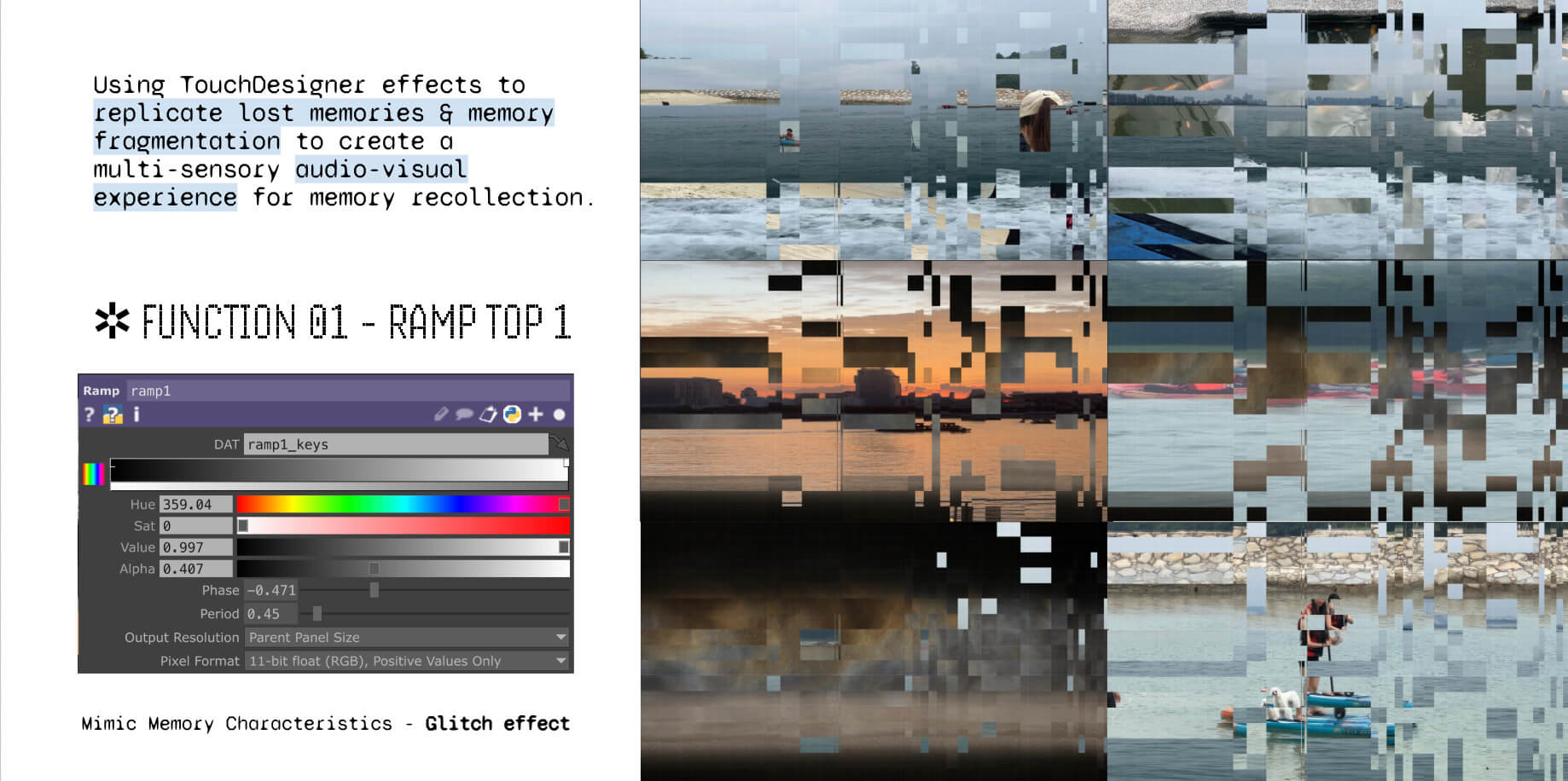
glitch (disappearing, fragmented effect) 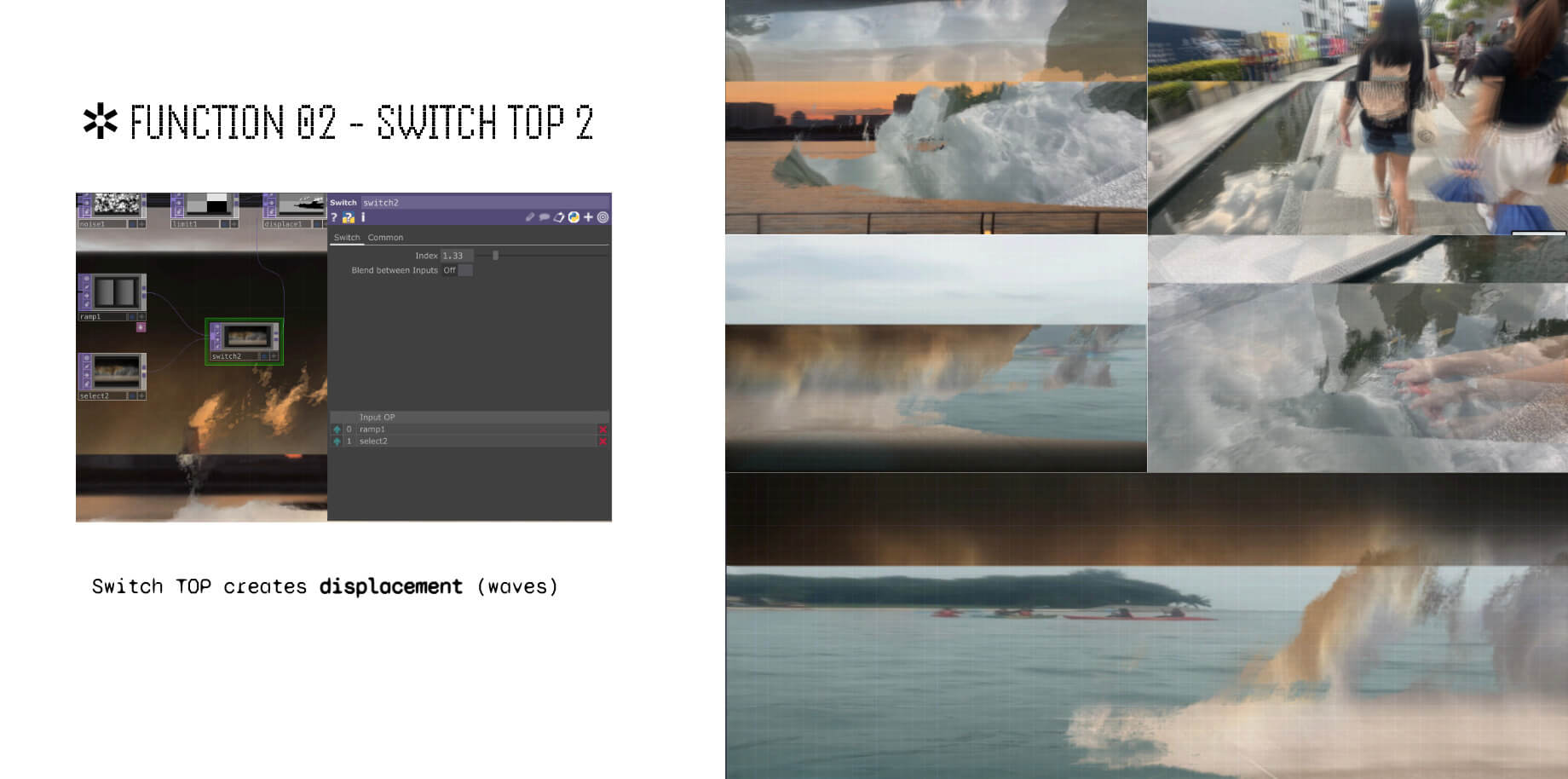
displacement (overlapping effect) 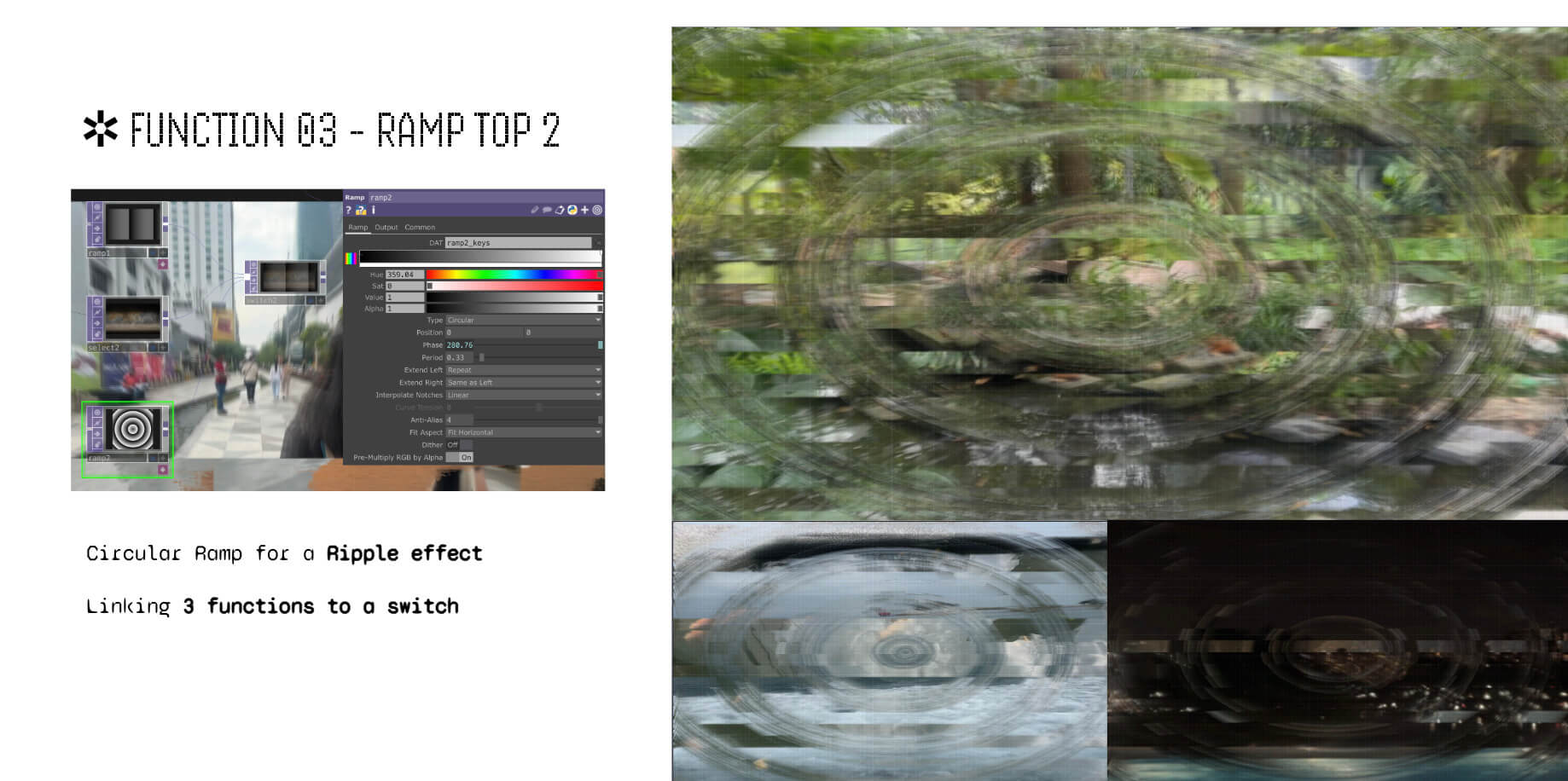
ripple (reoccuring effect)
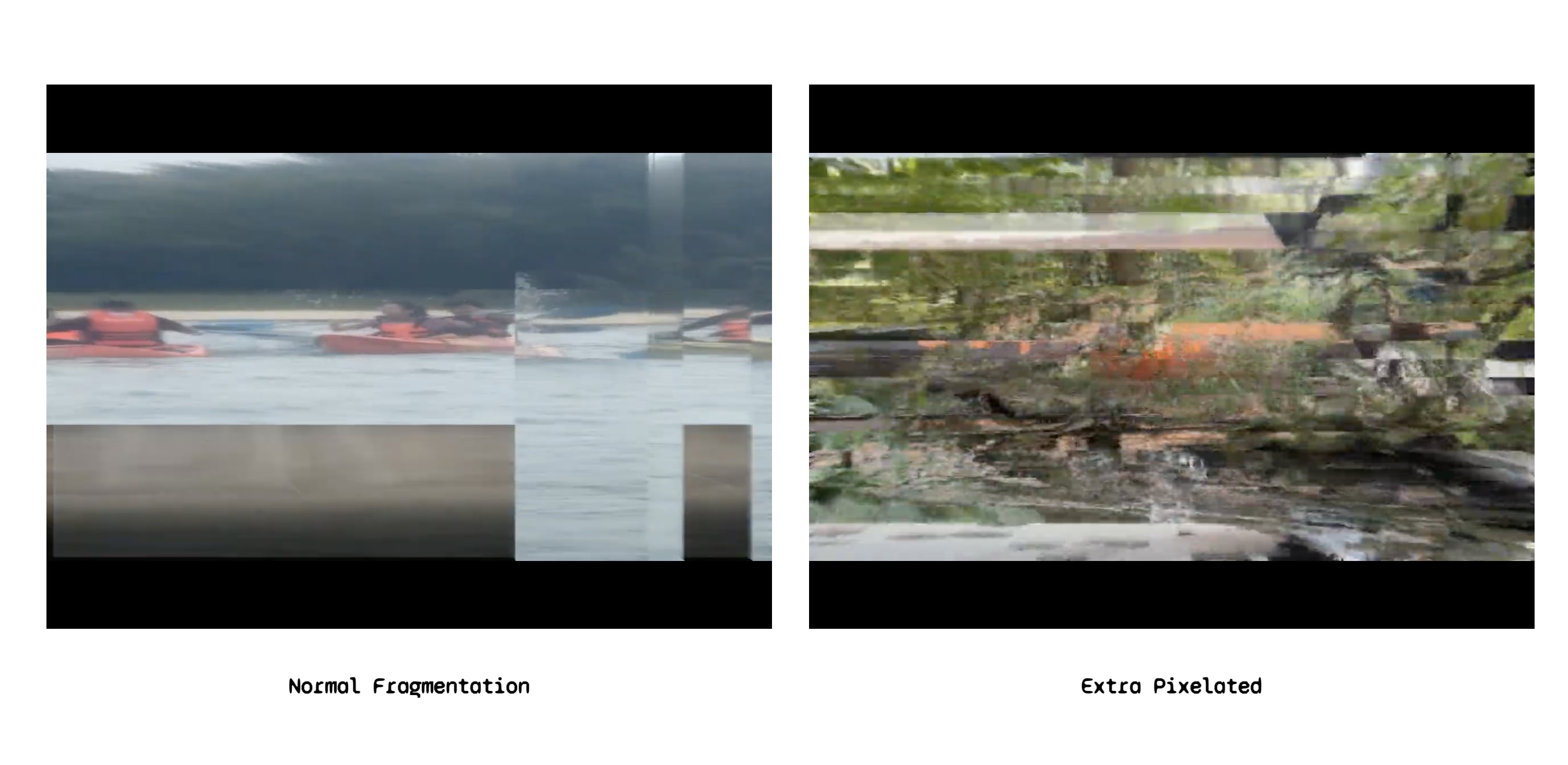
did up 2 renditions and prefer the (normal fragmentation) less pixelated version as it reminded me of how I can't remember the location of a memory clearly but i can still see the bits and pieces like the colours, and sometimes remember random details but it wouldnt be too pixelated like the one on the right, however that looks more visually appealing
